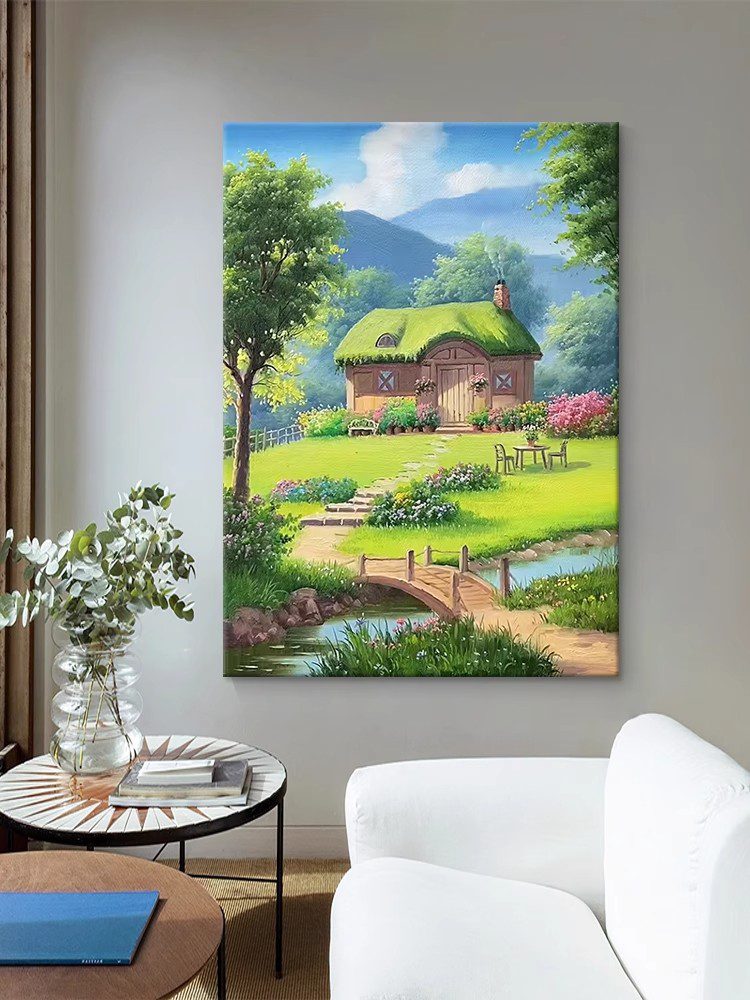The principle by which the shading technique enhances the layering of a picture
The overlay technique is a method in oil painting creation that enriches the color and gradation of the picture by repeatedly superimposing semi-transparent or transparent color layers. The principle by which it enhances the layering of the picture is mainly reflected in the following aspects:
Color superimposition and fusion
Principle: During the overdyeing process, semi-transparent or transparent pigments are evenly applied over the already dried base color. The base color and the overdyeing interpenetrate and blend with each other, creating a new color effect. This superimposition of colors is not merely a simple color mixture; rather, it enriches the color gradation through the reflection and refraction of light.
When depicting a person’s skin tone, you can first use a thicker layer of paint to create a basic skin tone base color. After it dries, apply a semi-transparent flesh color or pink to cover it up, making the skin tone softer and more natural, while also enhancing the texture of the skin.
Enhanced light and shadow effects
Principle: The shading technique can create the light and shadow effects of objects through the superimposition of different colors and changes in transparency. The bright areas can be brightened by shading with lighter colors, while the dark areas can be deepened by shading with darker colors, thereby enhancing the three-dimensional and spatial sense of the picture.
When painting landscapes, for the sky part, you can first use light blue as the base color. After it dries, apply a lighter shade of blue or white to create a bright and transparent effect on the sky. For the distant mountains, a darker green or gray color can be used to cover them, creating a contrast with the nearby scenery and enhancing the depth of the picture.
The depiction of details and texture
Principle: The shading technique can depict the details and texture of an object through fine brushstrokes and color variations. For instance, when presenting the luster of metals, the reflective effect of metals can be achieved by covering them with different shades of silver or gold. When depicting the texture of fabrics, the softness and texture of the fabrics can be highlighted by applying pigments of different colors and transparency.
When painting glassware in still life, you can first use transparent or semi-transparent paint to lay out the basic shape and color of the glass. After it dries, apply a darker color or black to the local area to show the thickness and reflective effect of the glass. At the same time, through fine brushstrokes and color variations, the textures and details on the glassware are depicted.
Practical key points for enhancing the layering of a picture through shading techniques
Preparation of the base color
The base color should be dry and smooth so that the overlay dye can be evenly applied over it. The color and lightness of the base color can also affect the effect after shading. Therefore, it is necessary to select the appropriate base color based on the overall tone of the picture and the effect to be expressed.
The selection of mask staining
The mask dyeing should have appropriate transparency so that it can penetrate and blend with the base color. At the same time, the color of the overlay also needs to be selected according to the requirements of the picture to achieve the purpose of enhancing the color gradation and light and shadow effect.
The number of times and thickness of the mask dyeing
The number of times and thickness of the overlay need to be adjusted according to the requirements of the picture. Excessive shading or overly thick shading layers may cause the picture to appear too dull or lose its transparency. However, too few dyeing cycles or too thin dyeing layers may not achieve the expected effect.
Control of drying time
After each layer dyeing, it is necessary to wait until the pigment is completely dry before proceeding to the next layer dyeing. If the pigment is not completely dry before applying the next coat, it may lead to uneven color mixing or the appearance of brushstroke marks and other problems.
